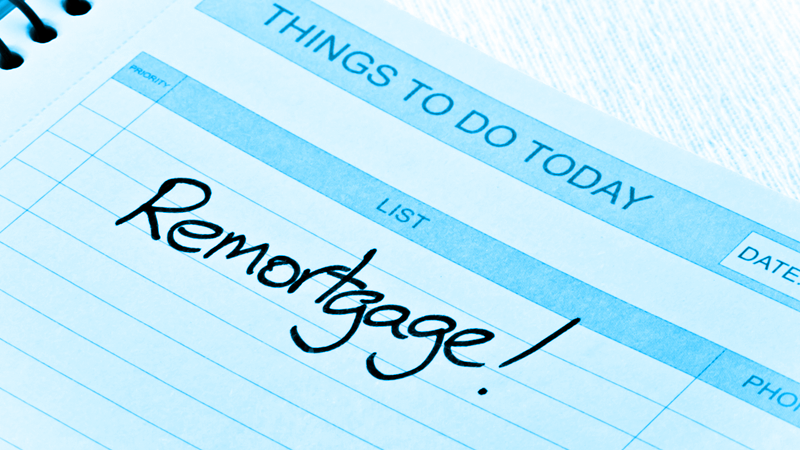If you’re planning to move or buy a new home and don’t want to lose your current mortgage deal, you can transfer it through a process known as porting.
It can make things easier and save you money, but you can miss out on better deals available on the market.
Read on to learn what porting a mortgage is, how it works and whether it’s the right option for you.
What does porting a mortgage mean?
Porting a mortgage involves transferring your existing mortgage to a different property and maintaining the same deal terms, like the mortgage period and interest rate.
You’ll likely sell your home when moving, and the proceeds can go towards paying off the existing mortgage.
You’ll then resume the mortgage on your new home with the same lender, rates, and terms.
Reasons for porting a mortgage
Porting is an easy option because you don’t have to do much research on new lenders, product deals, and rates.
You’ll not complete lots of paperwork since the lender already has your information on hand.
It can also save you money if you believe you’re on the best rates available on the market and don’t want to give that up.
It provides consistency if you feel the conditions and terms of the current agreement are perfect for your needs.
It’s a useful option if you have some time left on your current mortgage deal or are locked in a fixed-rate deal and don’t want to pay hefty early repayment charges (ERC).
How does porting a mortgage work?
You must reapply for the deal when porting a mortgage.
Things that can affect your eligibility for the agreement include the new property’s loan to value (LTV), changes in your circumstances since your first mortgage application, and changes in the lending criteria.
The lender will conduct affordability checks and check your credit, so there’s no guarantee that they’ll accept your application again.
The lender will mainly consider whether you can repay the mortgage and their position in terms of risk. If there’s more risk involved, like a higher LTV, they’ll likely not approve you for the same deal.
The lender will also conduct a valuation and survey of the property you plan before making a final decision.
Process of porting a mortgage
You can transfer your mortgage to a new property through the following steps:
Step 1: Determine whether your mortgage is portable
Not every mortgage is portable, so contact your lender or check the terms to determine whether it’s an option for you.
Avoid informing the lender you want to port your mortgage at this point, as you want to ensure it’s the best option for your situation.
Step 2: Determine the overall cost of not porting
Ask the lender if early repayment charges will apply if you sell your house with the fixed rate still in place.
It helps you determine the overall cost of whatever option you choose and see which is better.
Step 3: Consult a mortgage broker or advisor
It’s wise to check whether porting is in your best interests before proceeding, and you can do this by consulting a broker or advisor with experience dealing with porting mortgages.
They have access to the entire market and can check whether sticking with the current mortgage is the best option to ensure you don’t miss out on more suitable terms and better interest rates with a different lender.
Recommended reading for mortgage hunters:
- Mortgage deposit gifts
- How much does a mortgage broker cost?
- Can you build on the green belt?
- Shortest term mortgage in the UK
- Buying a warehouse in the UK
- Porting a mortgage explained
- Transferring a mortgage
Disadvantages of porting a mortgage
- The main downside is you can miss out on better rates and more favourable terms elsewhere by sticking to your existing deal and lender. If other deals are significantly better, you can consider remortgaging instead of mortgage porting.
- You still have to deal with other fees in porting, including valuation, legal, arrangement, and possibly a transfer fee.
- If the property you’re eyeing is more expensive, you may need to borrow additional money, which can be at a different rate, resulting in two products or mortgages with varying terms and end dates.
Factors that can affect your ability to port a mortgage
The following factors can determine whether you can or should port your mortgage:
Property type
Unusual properties have a limited market, and most lenders consider them a higher risk. If you default and the lender has to repossess, they’ll find it harder to sell than other properties.
Such unique properties can include houses with timber frames, high-rise flats, listed buildings, new builds, non-standard construction, and uninhabitable property.
Most high-end lenders will reject porting a mortgage for the unusual property. However, some specialist lenders can ask for more significant deposits in such cases to offset the risk, so you’re not entirely out of options.
Changed circumstances
The available options can differ if your employment, income, and personal circumstances have changed since you last applied for a mortgage.
You may quickly get more favourable terms and deals if your income and credit have improved, making it an excellent idea to shop around or use a broker to determine the best deal you can qualify for.
However, if you’ve been facing credit problems, your score has taken a hit, or your income has reduced, porting your mortgage might not be the best idea as you’ll likely not meet the lender’s requirements.
The cost of the property you’re buying
If you’re porting your mortgage to a more expensive property, you’ll likely need extra borrowing if you don’t have the capital to make up the difference.
Additional borrowing is often done on a new mortgage product, meaning you’ll be dealing with two mortgages simultaneously.
Porting to a cheaper property is more straightforward because you’re not borrowing more money.
However, if the property’s value is lower is going down, the loan-to-value (LTV) ratio will likely increase, and the lender can block the move as it puts them at greater risk.
Further reading:
- How much does the average mortgage cost?
- Modern method of auction
- What mortgage can I get for £500?
- Mortgages for discharged bankrupts
Porting A Mortgage Explained Final thoughts
Porting a mortgage is an option to consider if you’re planning to move to a new house and want to maintain your current terms, rates, and lender.
However, it’s not always the best option, so consult a mortgage broker or advisor with experience in mortgage porting so they can help you make the best decision based on your situation.
Call us today on 01925 906 210 or contact us. One of our advisors can talk through all of your options with you.
Need more help? Check our quick help guides:










